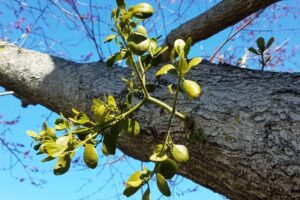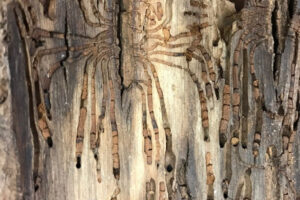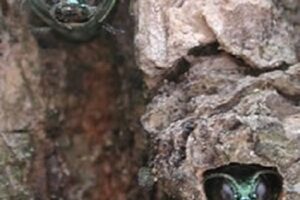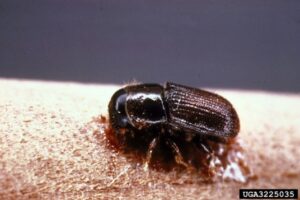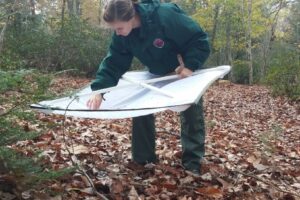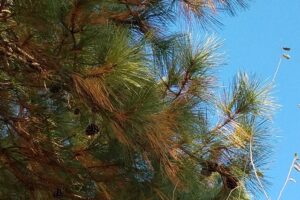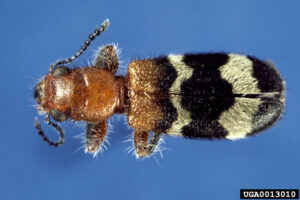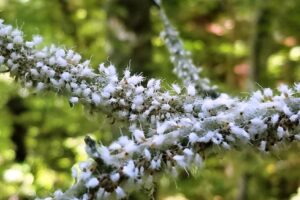Field Notes: What’s in the Woods Today? March 18 2019
April 11, 2019 - By Area Forester Lisa Deaton Parasitic Plants American or eastern mistletoe, Phoradendrum leucarpum, is a common parasite of oaks and maples in the Coastal Plain of Virginia. Birds carry the sticky white mistletoe seeds from tree to tree. The seeds sprout and their roots grow into the host tree to extract water and nutrients. In our eastern deciduous forests, winter provides a clearer view into the woods. The deciduous leaves... Read More

